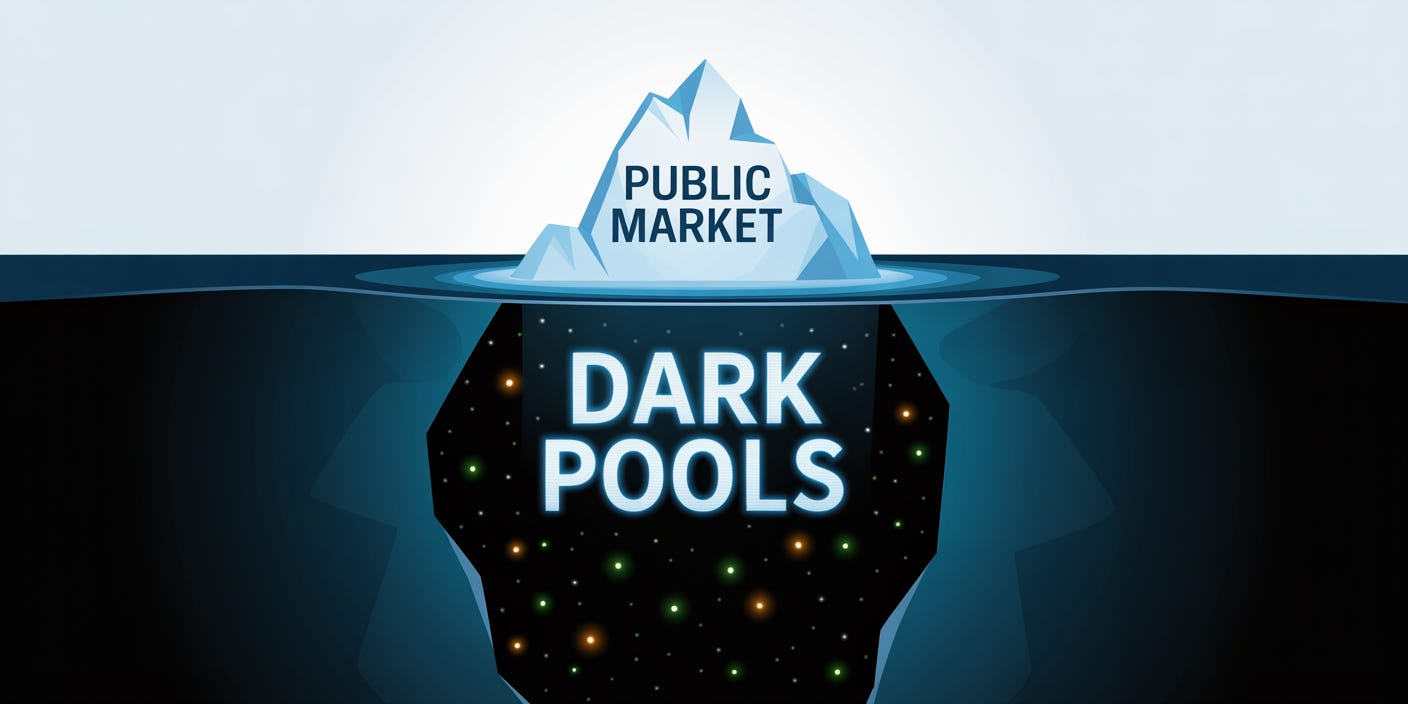A Simple Guide to Dark Pool Trading
When traders think of markets, they picture public exchanges like the NYSE or NASDAQ.
But beneath that surface is a network where billions of dollars exchange hands away from public view.
What Exactly Are Dark Pools?
First of all, dark pools are perfectly legal.
Dark pools emerged in the late 1980s and gained prominence in the 2000s, especially after regulatory changes allowed for more electronic trading.
Dark pools are private exchanges where institutions can trade large amounts of shares without anything noticing.
Large investors face a problem that retail traders don’t: their size moves prices. If a fund wants to buy 5 million shares of a stock, placing that order publicly would instantly move prices against them.
On top of that, everyone else will front-run them or fade them.
Dark pools solve that by providing:
Anonymity — no one knows who’s trading or why.
Reduced market impact — prices stay stable despite large orders.
Better execution — institutions can transact near fair value.
Today, these hidden trades account for 35–45% of all U.S. equity trading volume.
The Controversy
In today’s world, with secrecy always comes suspicion.
Dark pools were created with good intentions to help large investors trade without moving price, but over time, they’ve become controversial.
When large institutional orders are executed off-exchange, the broader market doesn’t see the full picture of supply and demand, potentially leading to distorted stock prices.
Retail traders rarely get direct access to dark pools, so they operate at an informational disadvantage.
When a large block trade happens off-exchange, the public only sees it after the fact.
Can Retail Traders Track Dark Pool Activity?
Historically, dark pools were off-limits to retail investors, designed for institutional “whales”, but in recent years demand surged for tools that democratize this data.
Increasingly, retail traders are finding ways to monitor dark pool prints to understand institutional behavior.
While they can’t see orders before execution, they can see Trade Reporting Facility (TRF) data and large “off-exchange prints” reported minutes later. That delay may seem minor, but in a fast-moving market it can mean the difference between catching a move or reacting to it.


